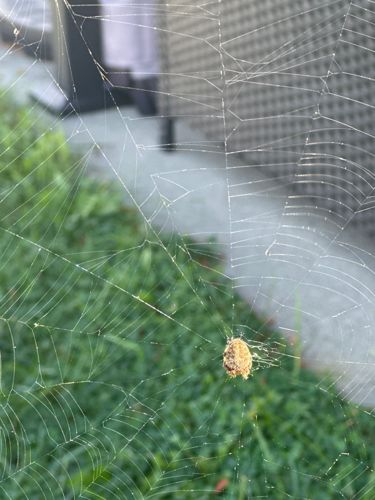Orb-weaver spider
Scientific Name: Araneidae (Family)
Order & Family: Order: Araneae, Family: Araneidae
Size: Varies greatly by species, typically 4-30 mm body length, with females usually being larger than males.

Natural Habitat
Gardens, forests, fields, and around human dwellings. They build their characteristic orb webs in open spaces between plants or structures.
Diet & Feeding
Mainly insects caught in their webs, such as flies, moths, mosquitoes, and beetles.
Behavior Patterns
Orb-weavers are known for constructing intricate, spiral wheel-shaped webs to catch prey. Most species are nocturnal, building or repairing their webs at dusk and remaining in or near the web during the night. During the day, they may hide near the web. They are generally solitary.
Risks & Benefits
Risks: Generally not considered dangerous to humans. Their bites are rare and typically result in mild, localized pain and swelling, similar to a bee sting. Benefits: Excellent natural pest control, as they capture and consume a large number of nuisance and crop-damaging insects.
Identified on: 9/29/2025